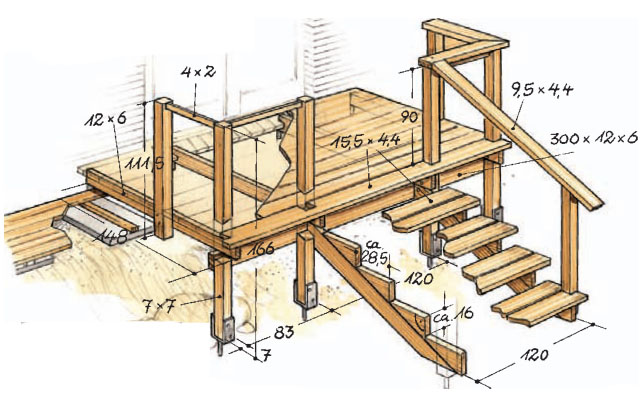 A step-by-step plan is needed, literally. Because to get an order list for wood, to be able to make screws and fittings, you need a precise idea of the staircase and the platform.
A step-by-step plan is needed, literally. Because to get an order list for wood, to be able to make screws and fittings, you need a precise idea of the staircase and the platform.
You can measure the difference in height with a straight staff and a spirit level or with a straight edge (Abb.5) determine. If you use this to calculate the number of steps, you should assume, that the material dimensions (depending on the wood supplier) specify the coupling and thus the height of the steps and the gradient of the stairs. You also depend on the material for the step depth. Longitudinal cuts should be avoided. We have two corrugated construction boards from 4,4 x 15,5 cm are placed one behind the other with an air gap and thus reach a step depth of just under 32 cm.
You should also take the dimensions of the wood into account when calculating the platform. Whenever possible, use stainless steel screws for the wood connections. And for the floor covering, turn the screw heads flush into the wood, so rain doesn't leave puddles there. However, they do not need to provide a gradient. The wood tolerates snow and rain.